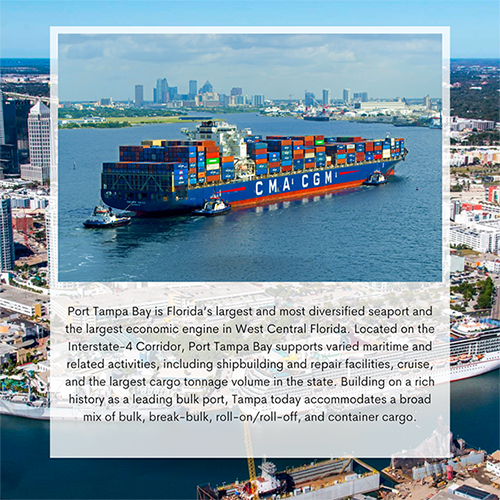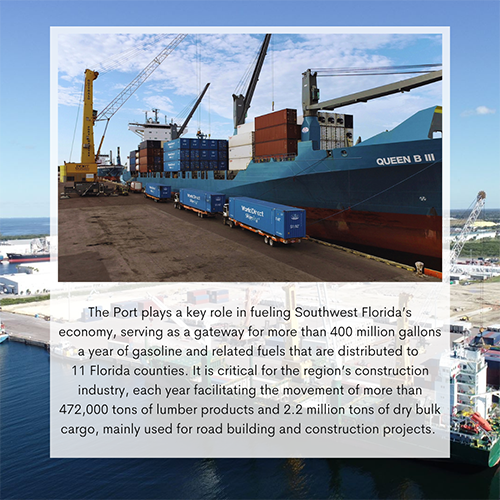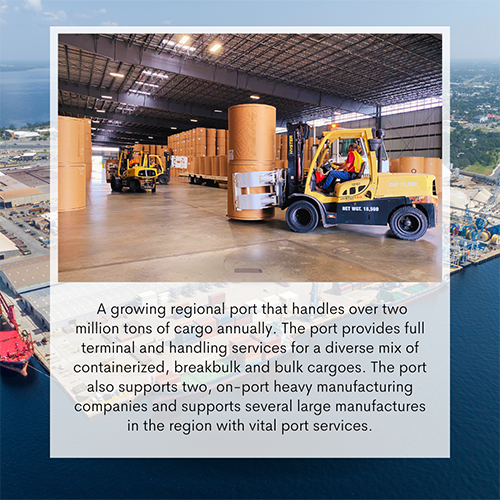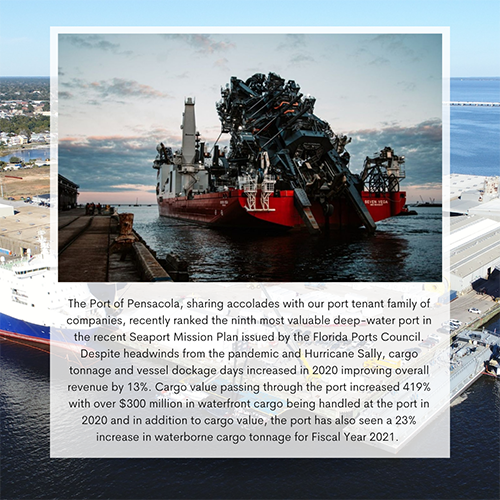New Federal Rule Threatens To Shut Down Four Florida Seaports
Would Hang 'Closed for Business' Signs at Ports Responsible for Over 40% of Florida's FuelNewly proposed rules by the National Oceanic Atmospheric Association (NOAA) pose a clear and present danger to Florida’s economy, its public safety and the security of our nation, the Florida Ports Council (FPC) said today. These federal rules would impose the most restrictive regulations on navigable waters from Pensacola to Tampa Bay, resulting in a near shut down of essential food, fuel, medical supplies and cargo imports and exports at four of Florida’s most active Gulf of Mexico seaports.
PORT TAMPA BAY

• One of the nation’s fastest growing seaports.
• Handled more than 33 million tons of cargo with an economic value of $17 billion in FY 2022.
• All cargo will be impacted by the proposed NOAA rule.
• More than 6,400 ships called on the port in FY 2022. That’s 17+ ships each day. All vessels traveled at night in the Gulf of Mexico for part of their transit.
• More than 7,677,245 net tons of domestic petroleum products came into the port in FY 2022, all with a nighttime aspect to their transits in the Gulf of Mexico.
• Read Port Tampa Bay’s Seaport Spotlight.

• One of the nation’s fastest growing seaports.
• Handled more than 33 million tons of cargo with an economic value of $17 billion in FY 2022.
• All cargo will be impacted by the proposed NOAA rule.
• More than 6,400 ships called on the port in FY 2022. That’s 17+ ships each day. All vessels traveled at night in the Gulf of Mexico for part of their transit.
• More than 7,677,245 net tons of domestic petroleum products came into the port in FY 2022, all with a nighttime aspect to their transits in the Gulf of Mexico.
• Read Port Tampa Bay’s Seaport Spotlight.
SEAPORT MANATEE

• $5.1 billion economic value annually.
• 33.4 percent of its ship traffic, reflecting a $1.7 billion value, will be impacted by this proposed rule.
• 325 cargo vessels that call on this port, representing 33.4 percent of all ship traffic, traverse to and from this port at night.
• 96 fuel ships, representing 10 percent of all fuel vessels that call on this port, traverse to and from this port at night.
• Read SeaPort Manatee’s Seaport Spotlight.

• $5.1 billion economic value annually.
• 33.4 percent of its ship traffic, reflecting a $1.7 billion value, will be impacted by this proposed rule.
• 325 cargo vessels that call on this port, representing 33.4 percent of all ship traffic, traverse to and from this port at night.
• 96 fuel ships, representing 10 percent of all fuel vessels that call on this port, traverse to and from this port at night.
• Read SeaPort Manatee’s Seaport Spotlight.
PORT PANAMA CITY

• 2.03 million tons of cargo was handled at this regional seaport in FY 2022, with the majority of cargo traversing at night in the Gulf of Mexico for part of its travels.
• $618.8 million in personal income and local consumption
• Supporting 10,790 total jobs in Northwest Florida and the Southeastern U.S.
• $1.6 billion in total economic value
• Read Port Panama City’s Seaport Spotlight.

• 2.03 million tons of cargo was handled at this regional seaport in FY 2022, with the majority of cargo traversing at night in the Gulf of Mexico for part of its travels.
• $618.8 million in personal income and local consumption
• Supporting 10,790 total jobs in Northwest Florida and the Southeastern U.S.
• $1.6 billion in total economic value
• Read Port Panama City’s Seaport Spotlight.
PORT OF PENSACOLA

• 425,277 tons of cargo handled in FY 2022, a 55 percent increase year-over-year
• $300 million in cargo now transits through this port – a 419 percent increase.
• Read Port of Pensacola's Seaport Spotlight.

• 425,277 tons of cargo handled in FY 2022, a 55 percent increase year-over-year
• $300 million in cargo now transits through this port – a 419 percent increase.
• Read Port of Pensacola's Seaport Spotlight.
